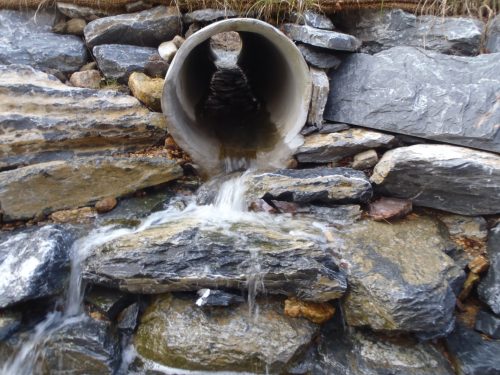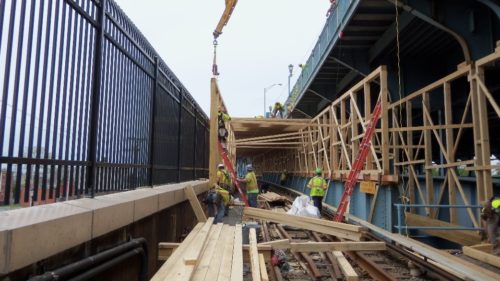Trotter Road Streambank Stabilization
Trotter Road Streambank Stabilization
Several hundred feet of stream embankment required slope stabilization because the stream was eroding an adjacent county roadway. Previous efforts to stabilize the embankment, using techniques such as dumping rock and applying shotcrete, were only temporarily successful. The stream was designated by the State of Maryland as Use Class IV-P: Recreational Trout Waters and Public Water Supply.
JMT was initially engaged to conduct an in-depth investigation of the stream channel and the streambank slope. Our water resources staff completed site field work and office research as part of the stability assessment of the channel reach. We performed cross section surveys at monumented riffle and pool sections in the impaired areas to determine stream classification and approximate bankfull discharge, and to establish a monitoring baseline for future assessments.
JMT also provided the geotechnical field investigation and performed geotechnical engineering analysis based on the borings completed by a subconsultant.
Our geomorphologic and geotechnical data and the resulting analysis were provided in a report with five slope stabilization options for our client to consider as potential solutions — slurry grouting, gabion slope stabilization, imbricated rip-rap slope stabilization, a conventional cantilevered retaining wall structure, and a secant pile retaining wall. The agreed-upon solution, based on cost and environmental factors, was an imbricated rip-rap slope. This solution, buffered by geotextile material placed against the earth prior to placement of the rip-rap, would stabilize the roadway while minimizing stream disturbances.
JMT served as the project engineer on behalf of our client, providing design and monitoring for the two needed embankment stabilization sites. We also assisted in the permit coordination with numerous county, state, and federal agencies such as the U.S. Army Corps of Engineers, Maryland Department of the Environment, and Maryland Environmental Trust.
Where possible, the rip-rap was designed to tie into bedrock to reduce the potential for undermining and surficial erosion. Landscaping plans were developed for reforestation of areas within the limits of disturbance using native herbaceous, shrub, and tree species. Live stake plantings were proposed in areas near the stream channel to provide habitat and vegetative stability.
Construction was conducted during the summer, once the school year had ended and following the local Class IV-P in-stream closure period. JMT was on site during construction, providing direct oversight as requested by the client. Subsequently, JMT provided post-construction baseline and year one monitoring.
The project was completed approximately 15% under budget and has already successfully weathered several storms.










